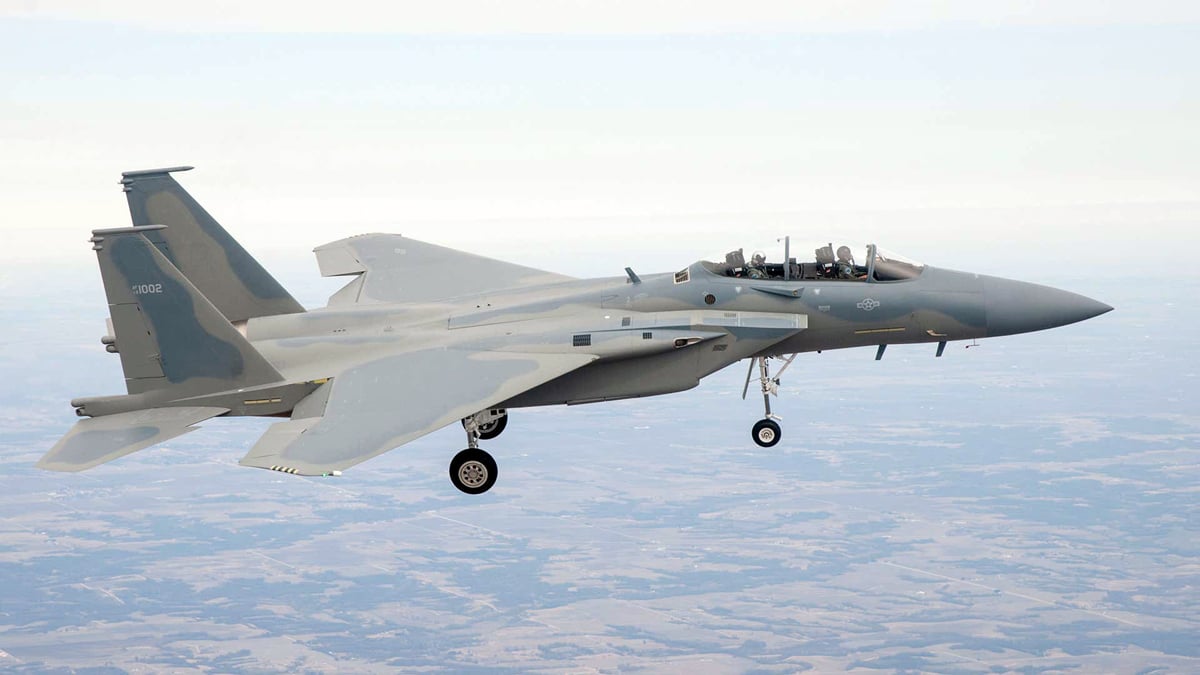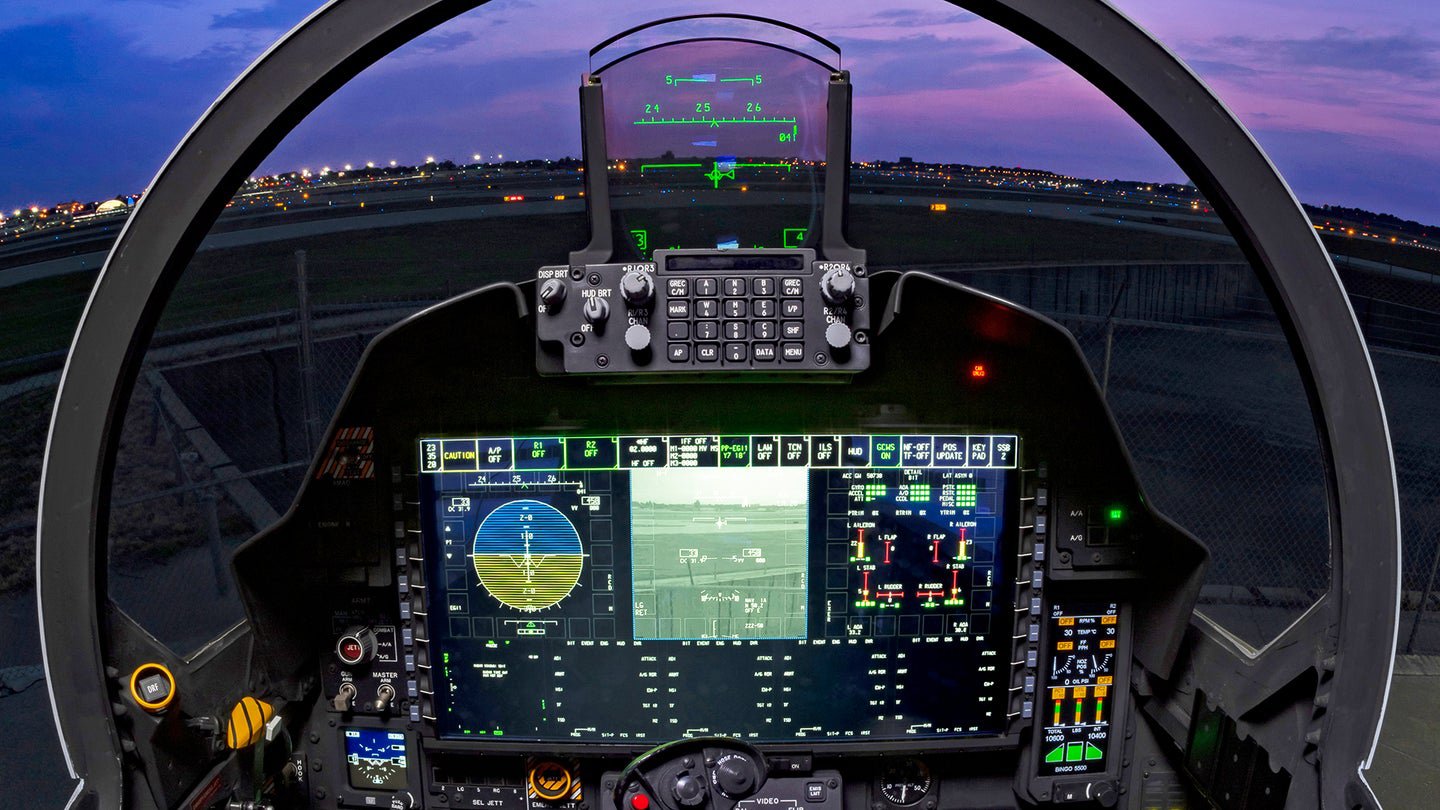Click Here to View This Page on Production Frontend
Click Here to Export Node Content
Click Here to View Printer-Friendly Version (Raw Backend)
Note: front-end display has links to styled print versions.
Content Node ID: 405551
Over the last two decades, the Boeing F-15 Eagle has seen a remarkable renaissance, despite the basic design dating back to the late 1960s. Deliveries of the fighter to the U.S. Air Force had ended in 2002 with the last F-15E Strike Eagle being handed over. Export derivatives of the F-15E were also delivered to Israel (F-15I) and Saudi Arabia (F-15S) in the 1990s.
For a while, that seemed to be the end of the line for Eagle development, but in the 2000s two Asian air arms selected modernized versions of the F-15E. South Korea selected the F-15K Slam Eagle for its heavy fighter requirement, while Singapore chose the F-15SG. Both versions had AAS-42 IRST (infrared search and track) sensors, new electronic warfare systems, and the ability to carry new weapons. Both of them also had a new powerplant in the form of the General Electric F110-GE-129 engine (although Korea’s second batch reverted to the Pratt & Whitney F100).
Enter the Advanced Eagle
These sales sparked renewed interest in the F-15, Boeing (Stand 1200) responding with an Advanced Eagle concept that drew on the features of the F-15K/SG but added fly-by-wire controls, active electronically scanned array (AESA) radar in the form of the Raytheon APG-63(V)3 or APG-82, two extra underwing hardpoints, F110 engines, and the option of a single wide-area display that occupied the full width of the instrument panel. At the same time, the internal wing structure was redesigned to improve the production efficiency and to extend the F-15’s service life to up to 20,000 hours.
The Royal Saudi Air Force (RSAD) was the first to order an Advanced Eagle version, which became the F-15SA. The RSAF’s existing F-15Ss are also being brought up to the same standard. With an APG-63(V)3 radar, new digital electronic warfare system, additional pylons, and revised cockpit—albeit without the wide-area display—the F-15SA was for a time the most capable Eagle version flying.

That situation did not last long as Qatar announced an order for 36 F-15QAs in 2017. Essentially similar to the F-15SA, the QA version did also have the wide-area display. Boeing flew the first of the Qatari aircraft on April 13, 2020. In early 2021 Qatari pilots began training in the aircraft at the Mid America-St. Louis Airport in Illinois (a civil-military airfield shared with Scott Air Force Base) in preparation for deliveries to begin to the Gulf country. At the same time as the initial order was placed, Qatar also took out an option for another batch of 36 that, if exercised, would bring the fleet to 72. The first was formally handed over on August 25, at which point the F-15QA received the Ababil name.

New Eagles for the USAF
In 2018 the U.S. Air Force began discussing the possibility of acquiring an advanced Eagle version based on the F-15QA to augment the Lockheed Martin F-35A and to replace the aging F-15C fleet. Initially known as the F-15X, it was to be a single-seater with the features of the QA, but with an Amber weapons rack that would increase the air-to-air missile loadout to a maximum of 22.
In early July 2020 the Department of Defense ordered eight aircraft, with another 12 requested for a contract in the 2021 budget. Designated F-15EX, and later named Eagle II, the aircraft are two-seaters, although the Air Force intends to operate them on most missions with a single pilot.
The AMBER rack was dropped, but the aircraft has the same systems as the F-15QA—including F110-GE-129 engines, wide-area display, and an AESA radar in the form of the APG-82. The F-15EX has a new low-profile head-up display from BAE Systems, EPAWSS electronic warfare suite, and expanded weapons-carrying capability. At the heart of the mission system is a high-speed Advanced Display Core Processor II and an open architecture that allows the insertion of new technologies as they emerge.
Due to its similarities with the F-15QA, the F-15EX was developed quickly and Boeing flew the first example— known as EX1—on February 2, 2021, with F-15 chief test pilot Matt Giese at the controls. The flight occurred nearly five decades after the Eagle’s first flight on July 27, 1972. EX-2 made its first flight soon after.
Eagle II deliveries
On March 10 EX-1 was officially handed over to the U.S. Air Force at Boeing’s Lambert Field facility in St Louis. On the following day, the first Eagle II was flown to its new home at Eglin Air Force Base in Florida, to begin the Air Force’s test and evaluation program for the new version of the Eagle. The F-15EX is the first Air Force aircraft to undergo a combined developmental and operational test program, which is being managed by an Operational Flight Program Combined Test Force (OFP CTF). The aim of combined testing is to field the aircraft as soon as possible. To further expedite the process, the team is drawing on data from the completed testing of the advanced F-15 foreign military sales variants, adding trials of U.S.-only sub-systems and Operational Flight Program software.
EX1 was ferried to Eglin by the commanders of the two squadrons that will perform the work, Lieutenant Colonel Richard Turner, commander of the 96th Wing’s 40th Flight Test Squadron (developmental test), and Lieutenant Colonel Jacob Lindaman, commander of the 53rd Wing’s 85th Test and Evaluation Squadron (operational test). The 40th FLTS is operating EX1 with its ‘ET’ tail code, while EX2—which was delivered in April—is assigned to the 85th TES and wears an ‘OT’ tail code. The six remaining aircraft in Lot 1 production will also be allocated to the Eglin test fleet, and are due for delivery in 2022/23.
The Air Force plans to procure 144 F-15EXs to replace the F-15C/Ds that serve with the Air National Guard. With an average age of 37 years, they are rapidly approaching the end of their useful lives. F-15EXs from production lots 2 and 3 are earmarked for delivery in 2024/25 to two squadrons within the Oregon Air National Guard: the 173rd Fighter Wing at Kingsley Field, which currently serves as the F-15C/D schoolhouse and will perform the same role for the F-15EX, and the 142nd FW, an operational unit based at Portland.
While the Air Force acknowledges that the Eagle II will not be able to operate in denied airspace beyond the late 2020s, the type can be used for the homeland air defense missions that are currently undertaken by the ANG, operations in benign air defense environments, and as stand-off attackers. The aircraft is touted as a carrier for long-range hypersonic strike missiles that are currently in development.
Adoption of the Eagle II by the USAF further strengthens its export credentials, and interest has been registered from India and Israel, among others. The type may also be considered as a replacement for the USAF’s F-15E Strike Eagles.
